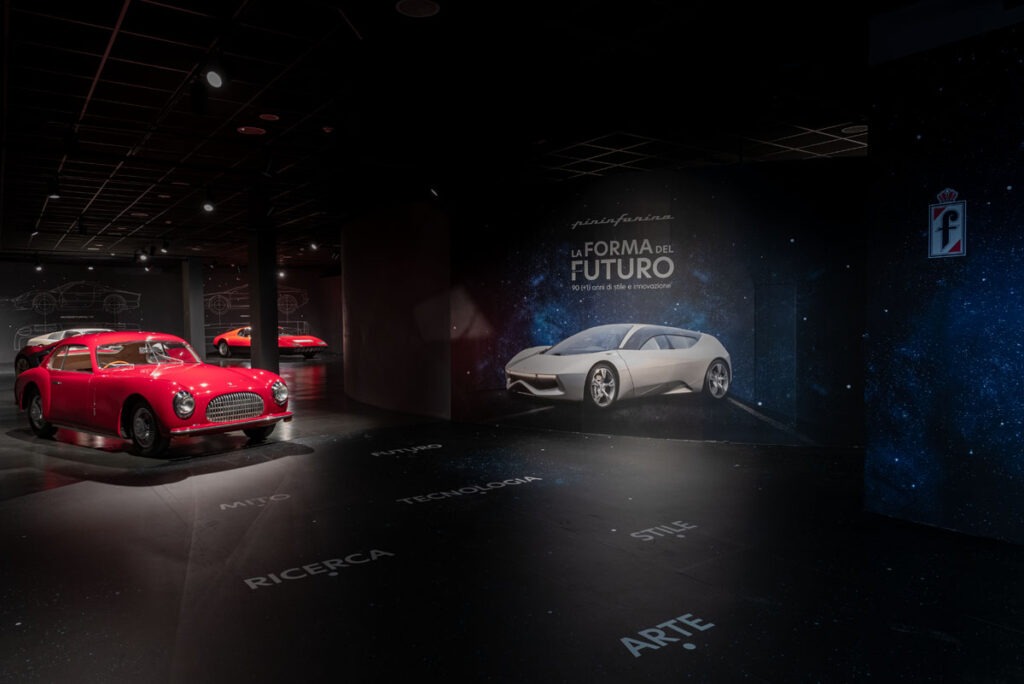
From 20 May to 12 September 2021
The MAUTO – Museo Nazionale dell’Automobile di Torino today inaugurates the exhibition “La Forma del Futuro” (The Shape of the Future), an extraordinary exhibition that, with the contribution of 16 exceptional cars, narrates Pininfarina’s innate ability to envisage the future and give it form by staying ahead of the times and setting trends. A selection of research prototypes, dream cars and exclusive cars testifying to the genius expressed by the world’s most famous Italian design house over three generations and more than 90 years of history, with an approach to design that, by combining style and function, has left its signature on the evolution of the motor car.
Pininfarina has always designed with an eye to a better future, including where cars are concerned. Its concepts have shown the world intriguing formal and technical solutions that respect the environment and resources while still being driven by design. In some cases, these fanciful four-wheeled creations were born to seduce manufacturers and public at international motor shows, but they also contain solutions designed for future mobility. In others, the research was driven by or was a response to environmental issues and energy crises. In these cases the insistence was on aerodynamic forms and alternative technologies and materials to make vehicles lighter and less polluting. Models that explore and impact new aesthetic and technological trends, some evolutionary, others extreme, but always outside the aesthetic canons of their epoch. And also models whose modernity and unique forms have made them museum icons or limited editions.
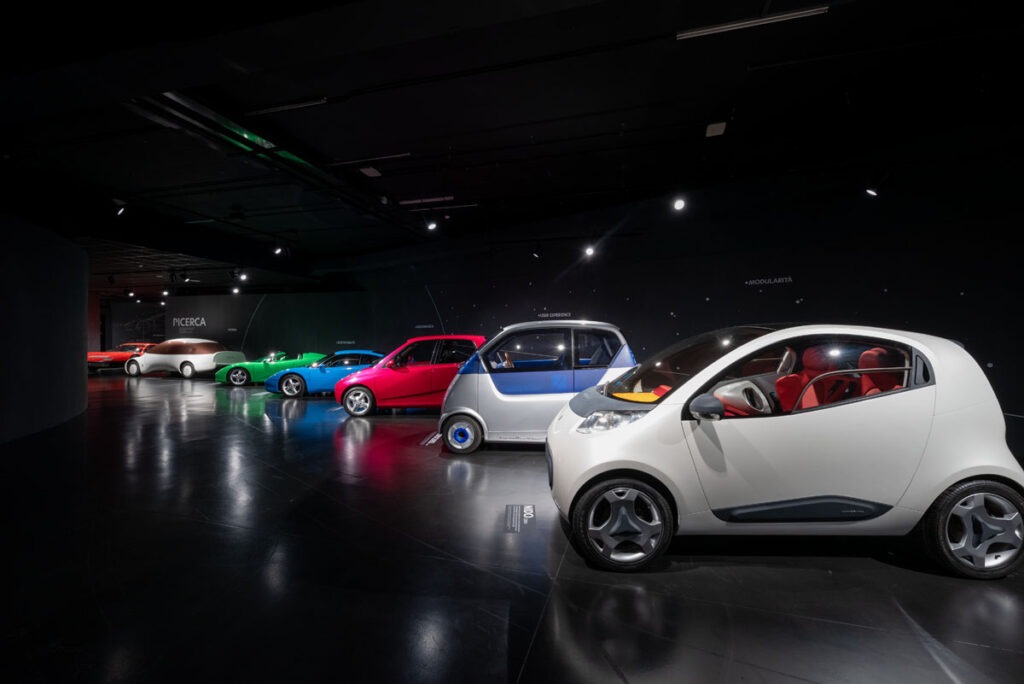
From this unparalleled journey of innovation spanning almost a century comes “The Shape of the Future”, an exhibition that will remain open to the public until 12 September 2021. The exhibition will include an audio guide to be enjoyed independently and in complete safety: visitors will be accompanied by the voice of Chairman Paolo Pininfarina. To access his video narratives, all you have to do is scan the QR codes located along the exhibition route with your cell phone.
Today, for the inauguration, two more jewels testifying to a history of innovation-driven design always in the name of the most authentic Pininfarina style will be on display: the first is the 1965 Dino Berlinetta Speciale, a one-off item just restored in the Pininfarina studio in Cambiano for a private collector as part of the restoration and certification of authenticity programme reserved for owners of models designed and built by Pininfarina. Next to the Dino, a styling preview of the driving simulator designed and built by Pininfarina for The Classic Car Trust, inspired by the forms of the legendary Cisitalia 202, created to offer gentleman drivers, through new technologies, the thrill of driving the most prestigious classic cars.
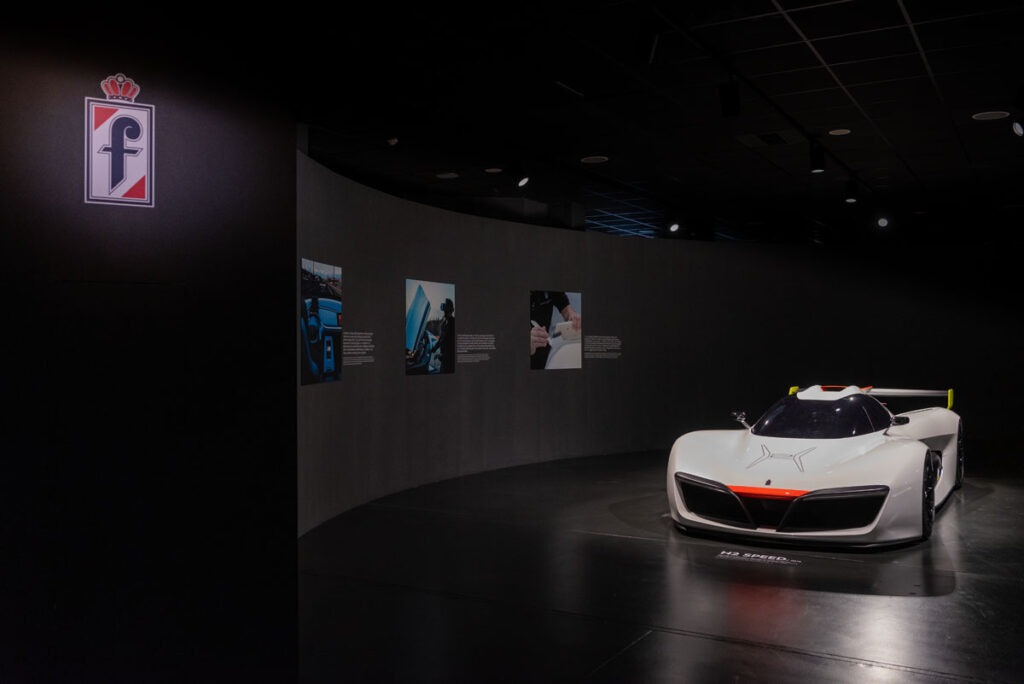
“On an anniversary of such importance for our company, which we are celebrating at the Mauto a year late because of the health emergency”, explains Chairman Paolo Pininfarina, “we look back on our journey by focusing on masterpieces that, each in their own way, have represented a leap forward in car design. Design is able to constantly enrich people’s lives and provide the foundation on which to imagine a new future. This is our mission, and it will remain so for the next 90 years”.
The 16 models on display not only tell the story of a company that has grown under the banner of innovation and a brand that has spread Italian design around the world. They also tell the story of men who, with their intuition and ability to surround themselves with talent, have made a fundamental contribution to the progress of the motor car.
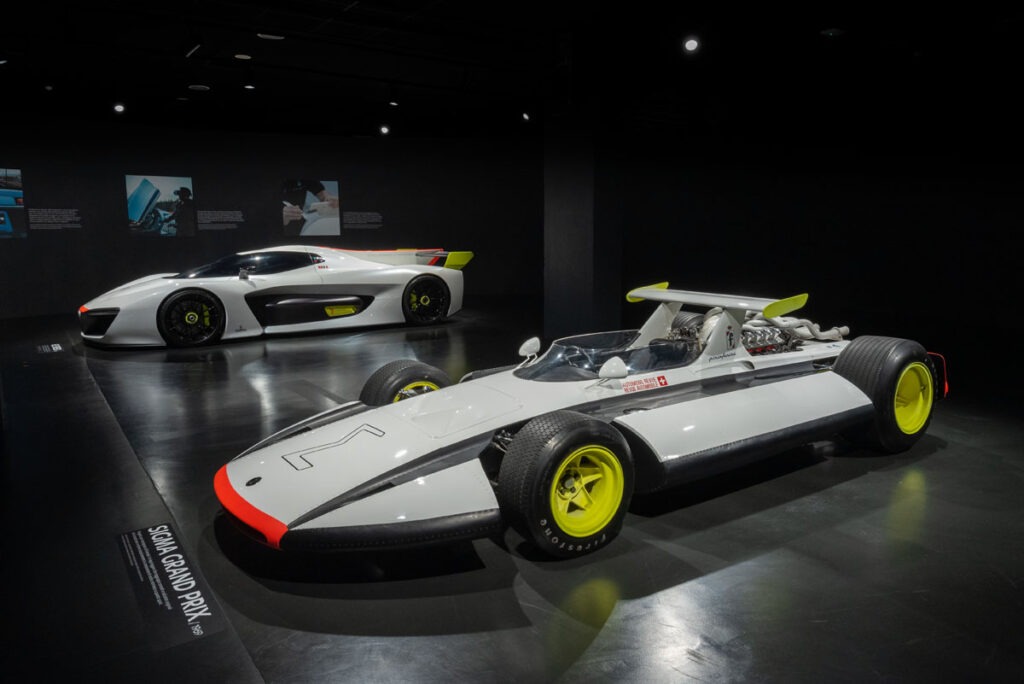
Starting with Founder Pinin Farina, a pioneer in the evolution of style and the study of aerodynamics, which he described as “the form of speed”: as early as 1936 he embraced the cause of modernity with the revolutionary Aprilia concept, and went on to sculpt memorable bodies like the Cisitalia 202 and countless models for prestigious brands such as Ferrari, Lancia, Alfa Romeo and Rolls-Royce. His aptitude for innovation was inherited by his son Sergio Pininfarina, who in 1972 at the height of the oil crisis took the decision to build Italy’s first Wind Tunnel, turning concepts like energy efficiency, emissions and eco-sustainability into household words. Concepts that he would later revisit with countless research prototypes such as the 1978 Ecos, the first electrically driven car, or the Compasso d’Oro-winning CNR. In the 2000s it was the family’s third generation that drove innovation. Andrea Pininfarina launched a series of research projects on the forms and technologies of the future, including the BlueCar electric city car and the spectacular Sintesi, with which Pininfarina became one of the very first players to explore the theme of connectivity and infotainment. Today’s Chairman, Paolo Pininfarina, took up the baton with projects that made environmental sustainability a hallmark, from the Nido EV and Cambiano electric concepts to the first hydrogen-powered H2 Speed track car, and the Battista electric hypercar, which would become a small series produced in Pininfarina’s Cambiano atelier.
The Mauto exhibition is not limited to celebrating the insights of the past, but aims to stimulate reflection on the cars of tomorrow. “The form of the future is always front and centre of our thinking”, comments CEO Silvio Angori. “In the next decade cars will no longer be the same as we have designed and built for 90 years. They will be connected, shared, electrified and autonomous. We are part of this revolution. The cross-fertilisation of all our skills, from automotive to architecture, from interior design to experience design, will determine the mobility of the Pininfarina-signed future“.
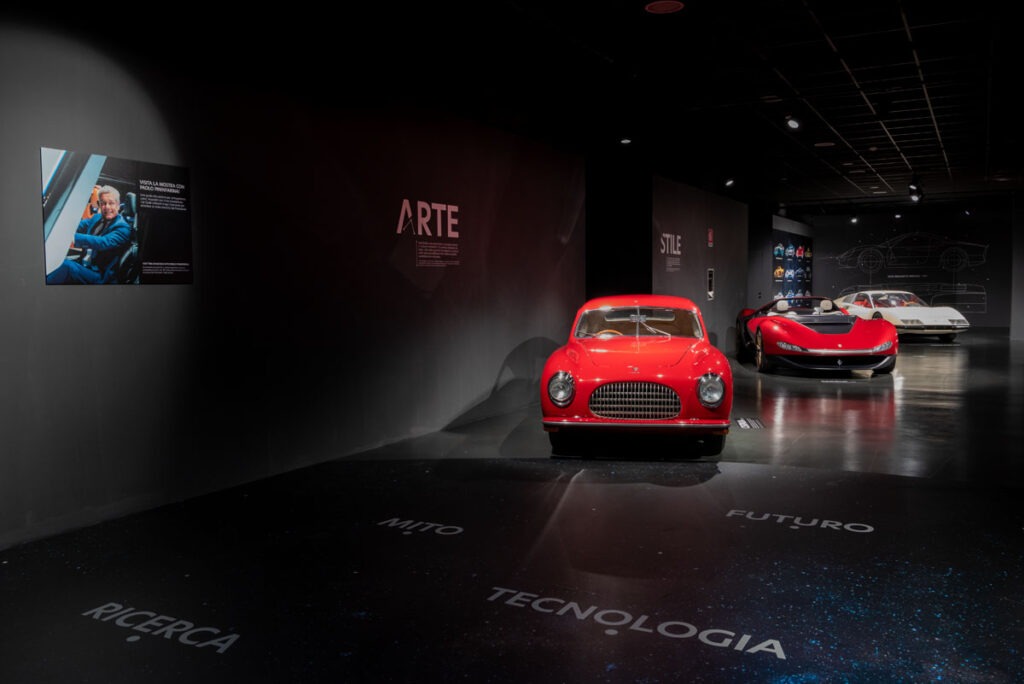
Benedetto Camerana, President of MAUTO, comments: “The exhibition for Pininfarina’s 90th anniversary renews MAUTO’s commitment to promoting scientific knowledge of automobile design. Celebrating the extraordinary history of the Turin brand, also exploring its future paths, for us means enhancing the great competence of our territory. Looking once again at the masterpieces present in the exhibition, and the others exhibited by us permanently, I see a continuous synthesis emerge that defines the idea of a universal classicism: every car, every prototype, while responding to the needs of a historical moment and anticipating it. others in the making, it imposes itself on the eye for its timeless value, suspended between past and future. The exemplary case of this condition is the Cisitalia 202, a work of industrial art that since 1947 and from Turin continues to conquer the eyes of the world“.
The Exhibition Itinerary
The exhibition is organised in thematic areas. It begins with the ART section, which must perforce be dedicated to the Pininfarina icon par excellence, the Cisitalia 202. This masterpiece shows us how Carrozzeria Pinin Farina interpreted innovation in the first decades of its history, in a perfect blend of heritage and avant-garde. The Cisitalia takes on the role of symbolic watershed in the history of car design: its style, in fact, foreshadows the lines and design that would distinguish the Sixties as a whole. With the Cisitalia, innovation became art: it was instantly defined as ‘sculpture in movement’ and was the first car in the world to be exhibited in a Museum of Modern Art, the MoMA in New York.
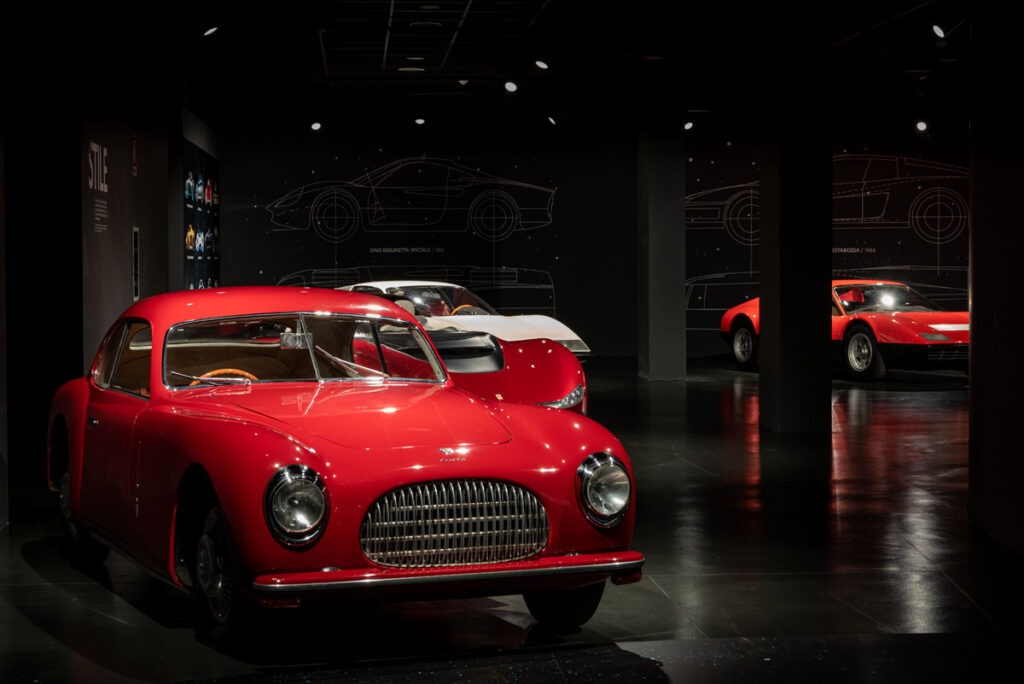
The STYLE area introduces the research that would dictate styling decisions of the years to come. A constant in Pininfarina’s history, always pursuing the number one objective, namely the creation of cars expressing beauty and typically Italian good taste. An approach that finds incredible confirmation in the partnership with Ferrari, this year celebrating its 70th anniversary. There are countless models that, at the time of their debut, featured solutions that we would find a few years later in successful production cars. Examples of this are to be found in the three Ferraris on display.
The P6, described by Paolo Pininfarina as ‘the mother of all berlinettas’, was destined to remain just a styling study, but its lines – its sharp, elongated nose and rectangular Carello lights – are a preview of the stylistic language that characterised the Ferrari range in the 1970s. And the 1971 Berlinetta Boxer is a case in point, even though at first glance it might look completely different. Presented as a styling prototype at the 1971 Turin Motor Show, the BB marked Enzo Ferrari’s conversion to the mid-engine solution. This prototype was the starting point for the series production of the 365 GT4 in 1973, albeit with the necessary modifications dictated by experimentation and industrial requirements. Completing the Ferrari triptych is the Sergio concept car, created in 2013 as a tribute to Sergio Pininfarina and then translated, two years later, into a small series of six units. A radical and essential performance-oriented object, where the windscreen is replaced by a “virtual windscreen” designed in the Wind Tunnel with the function of diverting the flow of air above the driver’s head.
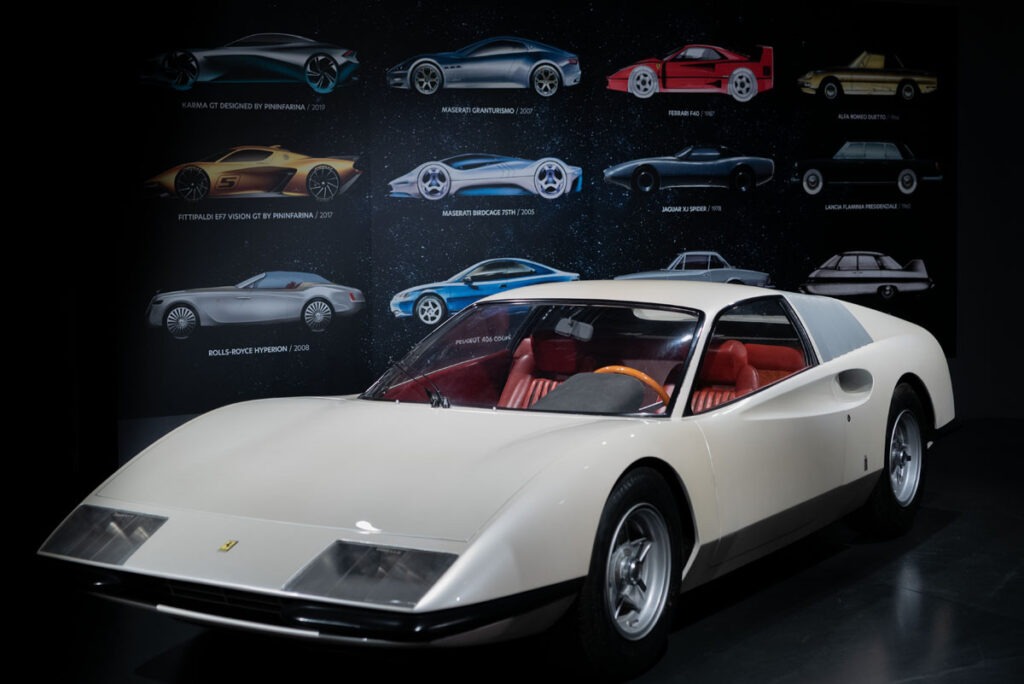
This is followed in the RESEARCH area by a line-up of models showcasing formal and aerodynamic research, studies on safety and interior architecture, experiments with new recyclable and ecocompatible materials, and the application of environmentally friendly propulsion systems. During the energy crisis of the 1970s, for example, the car industry focused on aerodynamics and alternative energy sources to reduce petrol consumption. Pininfarina responded by developing the CNR Energetica 1 prototype, an ideal aerodynamic body form. The 1990s witnessed a deeper awareness of environmental problems, more research into recyclable materials and ergonomics, and a more efficient concept of vehicle packaging. Pininfarina offered new solutions with the Ethos macro-project, a family of three eco-compatible vehicles of different configurations (spider, coupé, city car) with an aluminium chassis, bodywork in recyclable resin, innovative two-stroke engine with reduced emissions, culminating in 1995 with the Ethos 3EV, a zero-emission car. At the end of the Nineties, Pininfarina turned its attention to research into hybrid vehicles with projects like the Metrocubo which, with its modular cabin and pared down dimensions, also offered a response to problems of city and medium-range traffic. In 2004, the company returned to a theme already anticipated with prototypes such as the Sigma and Alfa Romeo P33: safety. With the Nido project, Pininfarina once again addressed the theme of the city car with a concept conceived as a protective nest around the two passengers. Its design was universally acclaimed and was awarded the Compasso d’Oro.
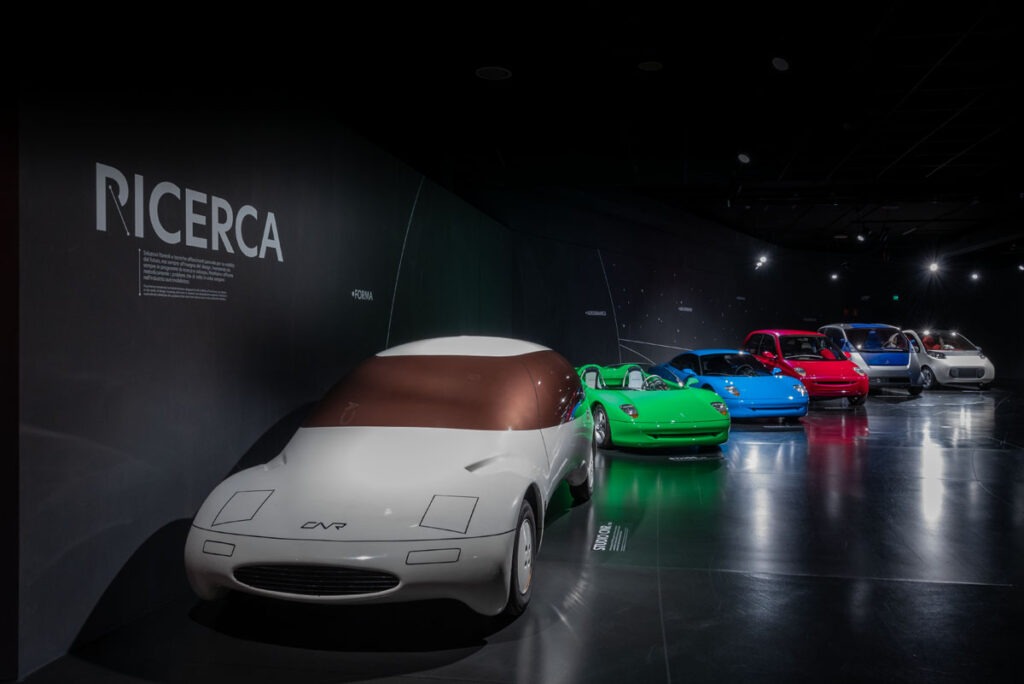
Leaving the RESEARCH area we enter the second part of the exhibition where each exhibit is a matchless spectacle. We begin with the TECHNOLOGY area, where we find two research objects applied to the world of racing cars. On the one hand, we have the Sigma Grand Prix from 1969, a project for a Formula 1 single-seater that brings together original safety concepts and solutions aimed at drastically reducing the risk aspect intrinsic to the sport. On the other hand, the H2 Speed, the first track car to use innovative hydrogen-powered fuel cell technology: the result is a zero-emission powerhouse that does over 300km/h, voted Concept Car of the Year 2016.
Before the grand finale, the exhibition presents the MITO area, a look at those masterpieces whose timeless styling has lodged them in the collective imagination as synonyms of the beautiful Italian car, often thanks also to Hollywood: among them, the Duetto driven by Dustin Hoffman in The Graduate, here evoked in some of its details, as well as in its name, by the 2uettottanta concept car. The spider of the future according to Pininfarina debuted in Geneva in 2010 on the occasion of the Company’s 80th anniversary. A concept representing an innovative vision, projected into the third millennium, of a theme that is firmly present in Pininfarina’s roots, the 2-seater spider.
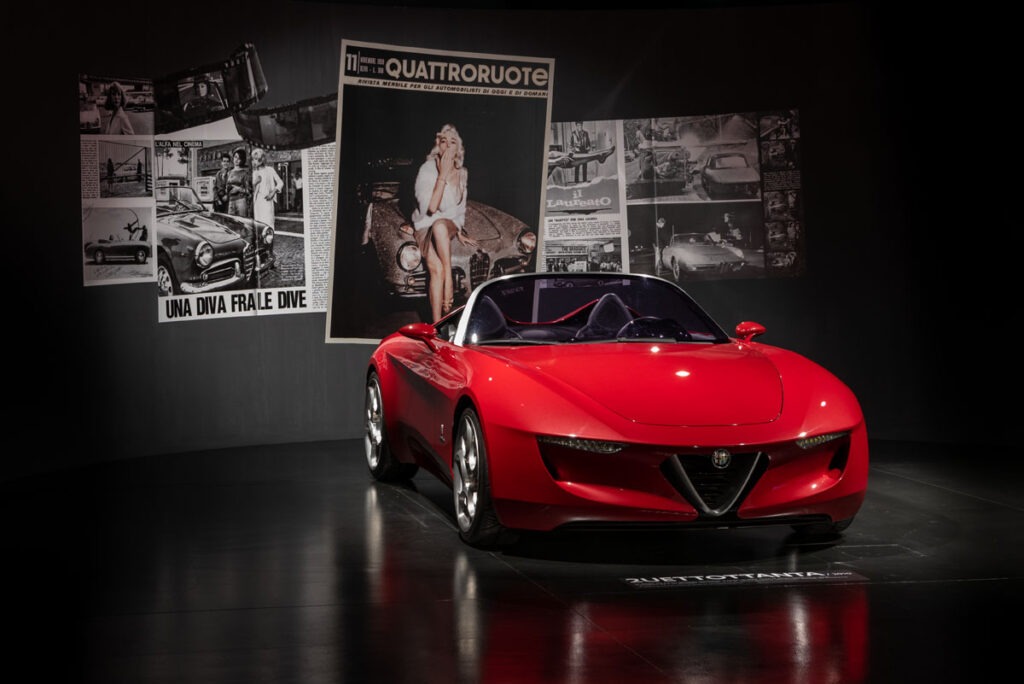
Closing the circle is the FUTURE area, where we see how Pininfarina views the world to come. In the meantime there are two concepts which, in their different ways, reflect Pininfarina’s vision of the car of tomorrow. The Sintesi explores the future of the car in terms of architecture, technology and connectivity. A zero emission vehicle powered by a fuel cell drive train with four electric motors on the wheels. Its content won it the Red Dot Design Award in 2008. The Cambiano, on the other hand, sets new standards of eco-sustainability in the high-performance luxury car segment, boasting as its strong point an electric powertrain that means zero emissions in the urban cycle.
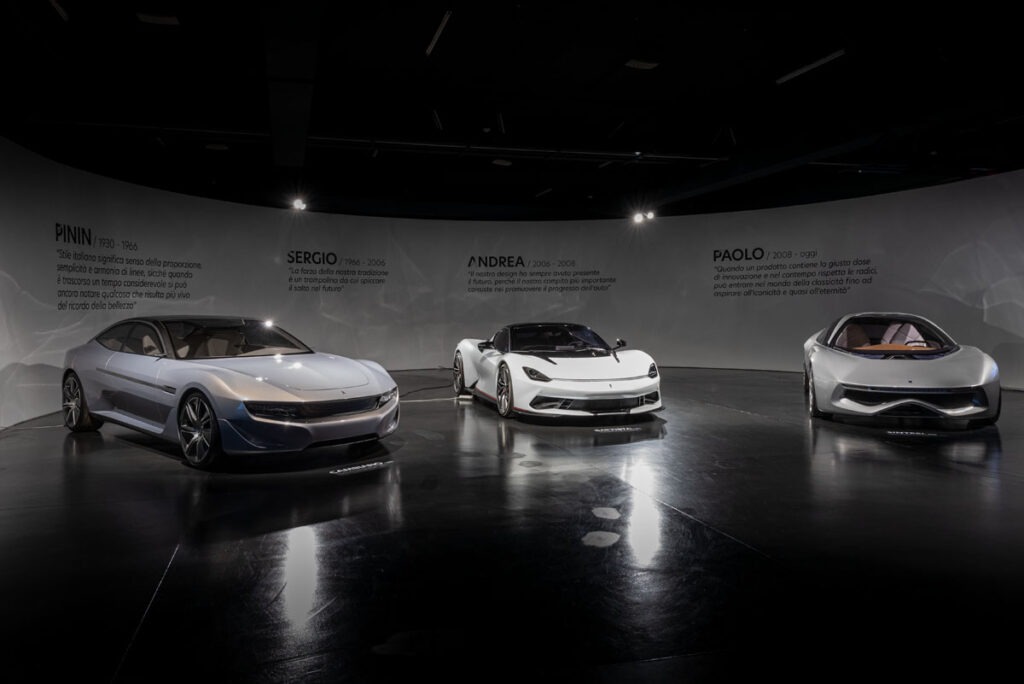
It is no coincidence that it won the ADI Design Index 2013 Innovation Award. Environmental sustainability can also be found in the interior, partly made with recycled wood from the “briccole”, the oak poles used to mark navigation routes in the Venice lagoon. Finally, the Battista, the electric hypercar concept presented at the 2019 Geneva Motor Show by Automobili Pininfarina, the new sustainable luxury car brand controlled by Mahindra & Mahindra Ltd. An emblem of Pininfarina’s mastery in the design and crafting of exclusive cars, the Battista will feature world-class performance, cutting-edge technological innovations and, of course, uniquely elegant styling. Designed and co-developed by Automobili Pininfarina and Pininfarina SpA, the Battista will be produced in 150 individually handmade units at the Pininfarina atelier in Cambiano. Bearing the name of the Founder, the Battista represents an extraordinary marriage between the past and the future of Pininfarina’s automotive commitment.
This section is enriched by scale models of the Mythos, Modulo, Lancia Aprilia aerodinamica and Fiat Abarth 750 prototypes.
Apart from the “The Shape of the Future” exhibition, the MAUTO has other Pininfarina masterpieces on permanent display:
- Fiat tipo Zero 1912 – Mechanical ferment
- Cisitalia 202 1948 – Italian revolution
- Ferrari 365 GT4 2+2 1973 – Good bye Lenin
- Ferrari 308 Gtb 1980 – Morphing – Design
- Alfa Romeo Duetto 1600 Junior 1972 – Morphin – Design
- Ferrari Mondial 1984 – Open Garage
- Lancia Aurelia B 20 1958 – Open Garage
- Fiat 130 coupé 1971 – Open Garage
- Cadillac Allanté 1992 – Open Garage
- Lancia Flaminia presidenziale 1961 – Ground floor (Quirinale collection, Rome)
- Lancia D24 1953 – Formula


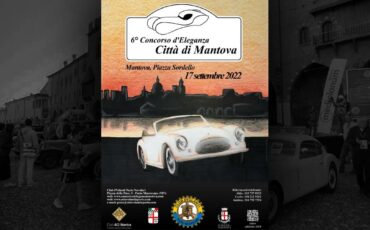
Bellissima esposizione, la consiglio a tutti. Forse avrei desiderato qualche modello d’epoca in più.